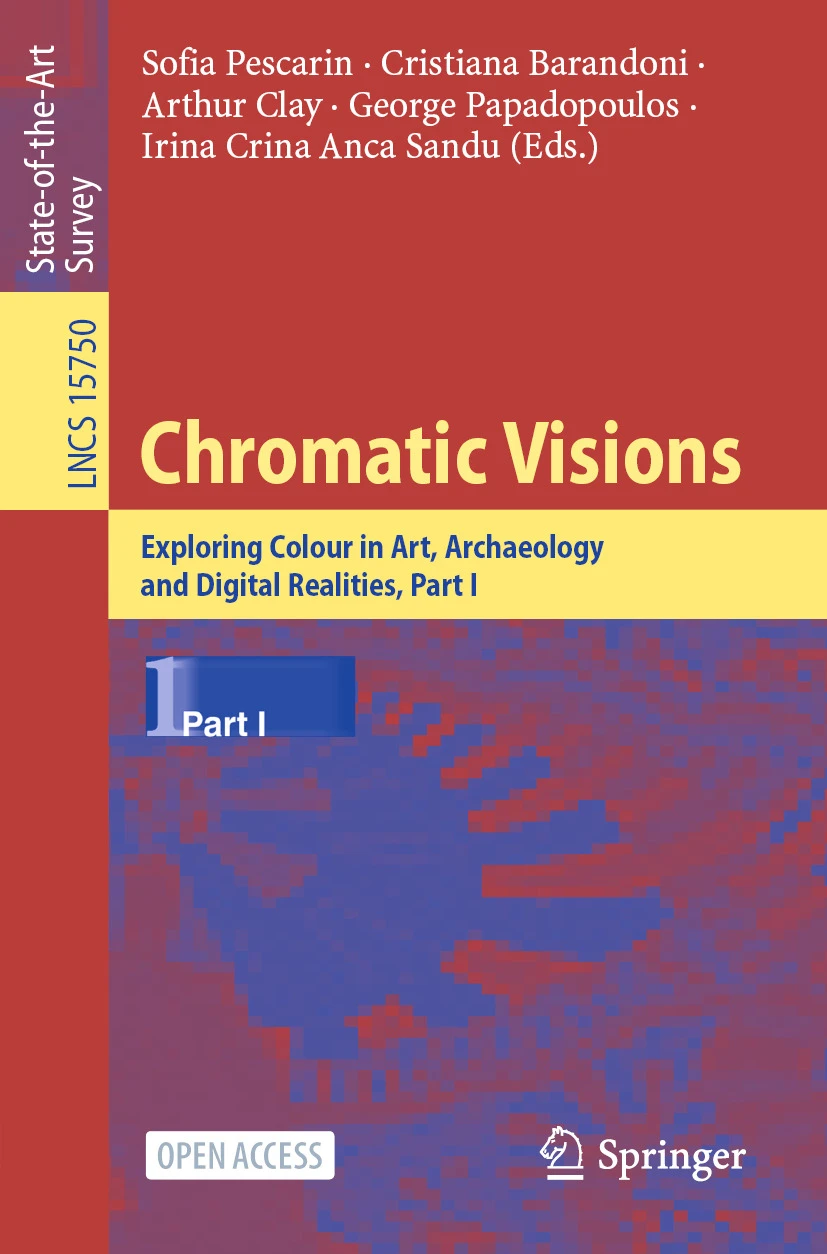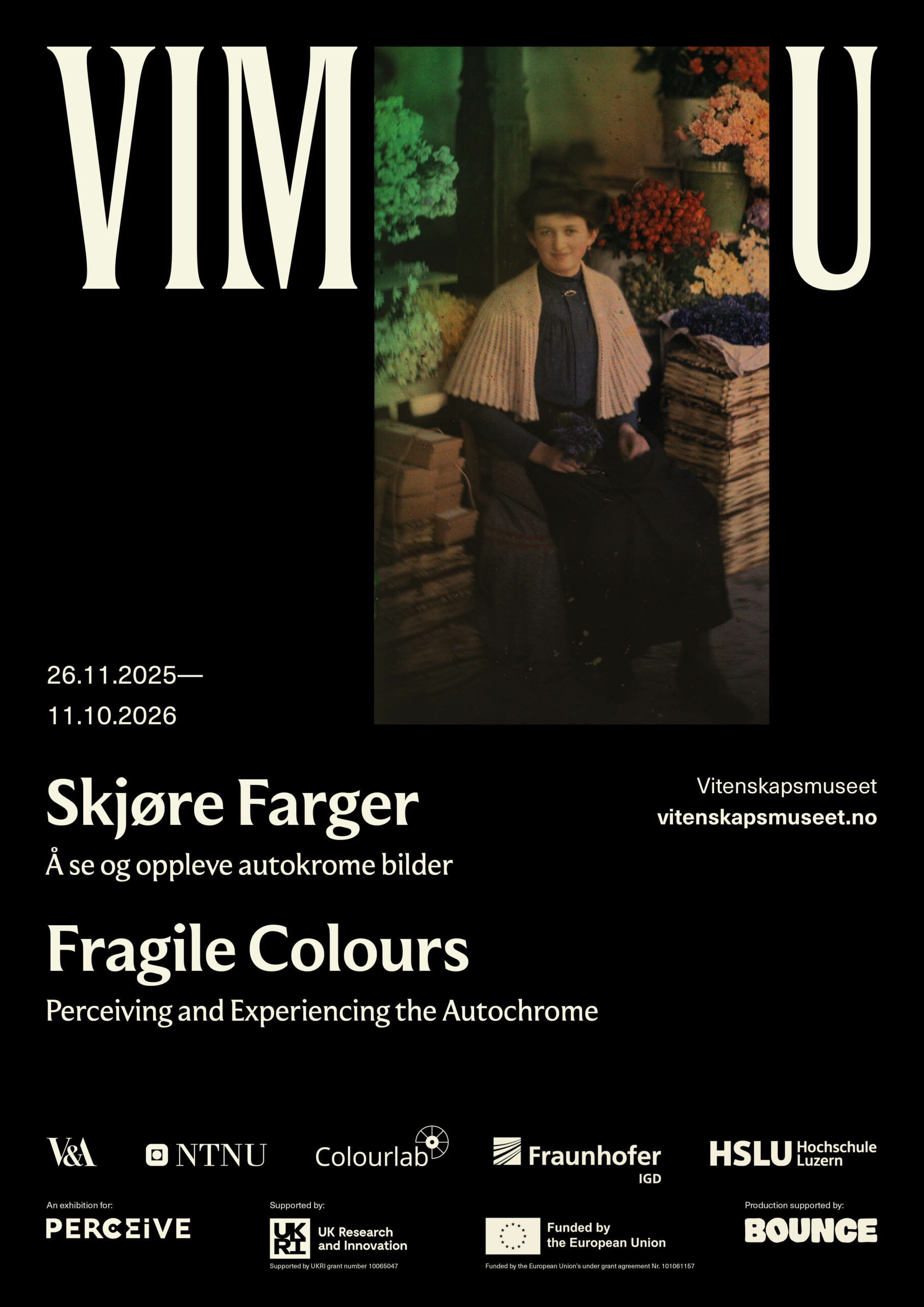The Open Museum Sketch Book is a collection of narrative design sketches that offers insights into strategies for navigating experiences with Cultural Heritage through the five scenarios of the PERCEIVE project: Disappearing or Lost Polychromy, Change of Colors in Paintings and Works on Paper, Fading Colors in Textiles (Dresses and Tapestry), Fading Colors in Photographic Collections, and Perceiving and Preserving Colors in Born Digital Artworks. To illustrate these concepts, the Sketch Book presents the methodologies employed in the Open Space Museum, specifically designed to meaningfully engage the public and foster an authentic connection between them and the content they are engaging with.

The Open Museum Sketch Book: A collection of narrative design sketches exploring Cultural Heritage and Born Digital Art.”
The Sketch Book is organized into chapter-like sections called channels. Unlike traditional chapters, which must conclude before the next begins, these channels flow continuously throughout the length of the book, covering all the key design elements of the Open Museum, including the Space Frame Design, the Case Study Elements, the Chroma Elements, and the Engagement Applications that interconnect the physical elements with the virtual. Notably, the Chroma and Case Study Elements are showcased through hand-drawn sketches paired with Key Pages that list the artworks used and highlight the features of each element. This section emphasizes creative approaches and innovative media use to present the artworks in a way that deeply resonates with viewers, forging a profound and meaningful connection between them and the works.

The channels in the Sketch Book flow continuously, covering key design elements of the Open Museum.”
The channel for the Engagement Applications offers readers insights into how each element is part of a hybrid design that employs the concept of ‘phygitality’—the seamless integration of physical and digital experiences. This approach combines tangible, real-world interactions with digital enhancements, creating a cohesive and immersive experience that blurs the boundaries between the physical and virtual worlds. To make this concept more apparent, the Engagement Applications channel features each app’s design by including QR codes that link readers to wireframes of these applications, allowing them to glimpse how the experience of visiting the Open Museum extends into the digital realm.

Engagement Applications channel with a QR codes linking to the wireframe, demonstrating the ‘phygitality’ concept in action.
The Space Frame Design channel delves into the structural morphology developed by the artists’ collective n55 for logically connecting the diverse elements conceived for the Open Space Museum. This section explores the extrusion framework they created using aluminum alloy square tubes, featuring a unique connection system that enables quick and easy assembly of the space frame elements. Through this design, the diverse components of the museum are seamlessly integrated, creating a cohesive structure that supports the overall architectural and curatorial vision.

The Space Frame Design: An extrusion framework of aluminum alloy square tubes, supporting the museum’s structure.
From a conceptual standpoint, the design of the Sketch Book mirrors the intricate structure of a complex counterpoint, where each channel is akin to an individual voice in a musical composition. Just as in counterpoint, where distinct melodic lines, rhythms, and timbres ensure that each voice remains independent and recognizable, each channel in the Sketch Book is crafted with a particular type of paper, a novel method of production, and a unique way to experience it.

Excerpt of Webern’s String Trio Op. 20 as a comparison between musical counterpoint and the design channels in the Sketch Book.
As a whole, the channels interweave diverse types of information, allowing the reader to explore and synthesize various perspectives, much like how counterpoint melodies or the flow of consciousness in writing capture the natural, interconnected nature of thought. This approach prevents the channels from blending into a single, undifferentiated form, maintaining their individual identities while contributing to the overall harmony of the book, which is achieved through the reader freely associating content from the channels.
To better anchor this multidimensional experience, a special book stand was developed to match the book’s way of disclosing information through channels. The stand features three platforms to support turned pages, allowing the reader to turn the page to the left or right, creating a reading area of three pages. This design not only presents the information effectively but also facilitates deeper engagement with the content by enabling the reader to view multiple channels simultaneously. As the reader navigates these overlapping streams of information, they begin to draw connections and synthesize diverse perspectives, fostering a richer understanding of how these elements combine.

The custom designed book stand designed to support turned pages, enabling simultaneous viewing of multiple channels.”
Much like effective voice leading in music, which ensures smooth transitions and clarity, the careful design of the Sketch Book guides the reader through the channels without confusion, allowing each to be perceived clearly. The channels are like voices placed in different registers, each occupying its own space within the book, making it easy for the reader to distinguish and appreciate them. Dynamic variations in the book’s production—whether through the texture of the paper or the interaction required—highlight each channel at specific moments, ensuring that all are perceptible within the overall texture of the book.
This thoughtful combination of elements allows the channels to interact and complement each other, creating a rich, multi-layered experience that is more than the sum of its parts. By doing so, the Sketch Book not only presents information but also encourages new insights and a more profound grasp of the material, demonstrating how diverse elements, when carefully orchestrated, can lead to a deeper, more complex understanding of the experiences curated within the Open Space Museum.



